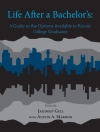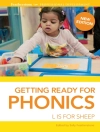The astonishing revival of saint worship in contemporary Israel was ignited by Moroccan Jews, who had immigrated to the new country in the 1950s and 1960s. The Saints’ Impresarios charts the vicissitudes of four new domestic shrines, each established by Moroccan-born men and women in a peripheral development town, following an exciting revelation involving a saintly figure. Each of the case studies discussing the life stories of the “saint impresarios” elaborates on a distinctive theme: dreams as psychocultural triggers for revelation; family and community responses to the initiative; female saint impresarios as healers; and the alleviation of life crises through the saint’s idiom. The initiatives are evaluated against the historical background of Jews in Morocco and the sociopolitical and cultural changes in present-day Israeli society. The original Hebrew edition garnered the coveted Bahat Prize (Haifa University Press) for best academic book in 2006. For readers interested in Israel and Jewish Studies, folk religion and mysticism, cultural and psychological anthropology, and Moroccan Jews.
表中的内容
I. The Folk-Veneration of Saints in Morocco and Israel. a. Dream Portal. b. Roots in the West: The Cult of Saints in Morocco. c. From West to East: Moroccan Jewry in Israel. d. Native Saints and Immigrant Saints: The “Sacred Geography” of Moroccan Jews in Israel.II. Avraham Ben-Hayyim and Rabbi David U-Moshe. a. A Dream Journey to the Saint. b. A Saint in the Next Room: Rabbi David u-Moshe and the Ben-Hayyim Family. c. The Abode of Rabbi David u-Moshe at the Dawn of the 21st Century. III. Ya’ish Ohana, Elijah the Prophet and the Gate of Paradise. a. The Road to Paradise. b. Dreamers in Paradise. c. Paradise Lost. IV. Alu Ezra and Rabbi Avraham Aouriwar. a. Early and Late Revelations. b. Life Story as Folktale: The Cinderella of Beit She’an. c. Twenty Years Later. V. Esther Suissa and Rabbi Shimon Bar-Yohai. a. From Patient to Healer. b. Written in the Egg Yolk: The Healing Art of Female Saints’ Impresarios. c. Esther and Rabbi Shimon: A Return Visit. VI. The Cult of Saints from a Comparative Perspective: Symbol, Narrative, Gender and Identity. a. Crosscutting Stories: The Saint’s Impresarios from a Comparative Perspective. b. Personal symbols and Mythic Narratives. c. Gender and Sanctity: The Female Way to the Tsaddiq. d. Migrating Traditions: The Historic Timing and the “Shelf Life” of the New Shrines. e. The Cult of Saints as an Israeli and Local Phenomenon. Bibliography. Index.
关于作者
Yoram Bilu (Ph.D. Hebrew University) is a professor of anthropology and psychology at the Hebrew University. His main publications include Grasping Land: Space and Place in Contemporary Israeli Discourse and Experience (SUNY Press 1997, co-edited with Eyal Ben-Ari) and Without Bounds: The Life and Death of Rabbi Ya’aqov Wazana (Wayne State University Press 2000).












